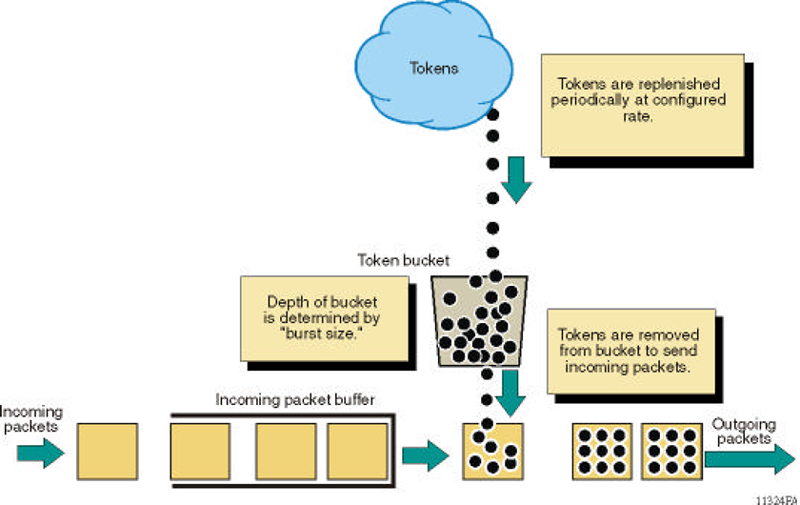Port-Rate Limiting, Policing, and Shaping
|
Feature |
Product |
Release introduced |
|---|---|---|
|
Platform specific considerations for QoS behavior are documented in QoS Behavior Differences, which is in VOSS User Guide. |
||
|
Egress port shaper |
5420 Series |
VOSS 8.4 |
|
5520 Series |
VOSS 8.2.5 |
|
|
VSP 4450 Series |
VSP 4000 4.0 |
|
|
VSP 4900 Series |
VOSS 8.1 |
|
|
VSP 7200 Series |
VOSS 4.2.1 |
|
|
VSP 7400 Series |
VOSS 8.0 |
|
|
VSP 8200 Series |
VSP 8200 4.0 |
|
|
VSP 8400 Series |
VOSS 4.2 |
|
|
VSP 8600 Series |
VSP 8600 4.5 |
|
|
XA1400 Series |
Not Supported |
|
|
Ingress dual rate port policers |
5420 Series |
Not Supported |
|
5520 Series |
Not Supported |
|
|
VSP 4450 Series |
VSP 4000 4.0 |
|
|
VSP 4900 Series |
Not Supported |
|
|
VSP 7200 Series |
Not Supported |
|
|
VSP 7400 Series |
Not Supported |
|
|
VSP 8200 Series |
Not Supported |
|
|
VSP 8400 Series |
Not Supported |
|
|
VSP 8600 Series |
VSP 8600 4.5 |
|
|
XA1400 Series |
Not Supported |
|
|
QoS ingress port rate limiter |
5420 Series |
VOSS 8.4 |
|
5520 Series |
VOSS 8.2.5 |
|
|
VSP 4450 Series |
Not Supported |
|
|
VSP 4900 Series |
VOSS 8.1 |
|
|
VSP 7200 Series |
VOSS 4.2.1 |
|
|
VSP 7400 Series |
Not Supported |
|
|
VSP 8200 Series |
VSP 8200 4.0 |
|
|
VSP 8400 Series |
VOSS 4.2 |
|
|
VSP 8600 Series |
Not Supported |
|
|
XA1400 Series |
VOSS 8.1.50 |
|
The switch QoS implementation supports the following two features for bandwidth management and traffic control:
-
ingress port–rate limiting—a mechanism to limit the traffic rate accepted by the specified ingress port
-
egress port-rate shaping—the process by which the system delays and transmits packets to produce an even and predictable flow rate
Each port has eight unicast and multicast queues, Class of Service (CoS) 0 to CoS 7. Traffic shaping exists on the egress CoS 6 and CoS 7, but you cannot change the configuration. CoS 6 and CoS 7 are strict priority queues, with traffic shaping for CoS 6 at 50 percent and CoS 7 to five percent of line rate.
Some VOSS hardware platforms allow you to configure an egress shaping rate for each port manually. For XA1400 Series, the egress shaping rate for each front panel port dynamically adjusts to the auto-negotiated link speed, up to the maximum link speed of the port.
The VSP 4450 Series switch QoS implementation supports the following two features for bandwidth management and traffic control:
-
ingress traffic policing—a mechanism to limit the number of packets in a stream that matches a particular classification
-
egress traffic shaping—the process by which the system delays (or drops) and transmits packets to produce an even and predictable flow rate
Each feature is important to deliver DiffServ within a QoS network domain.
Token buckets
Tokens are a key concept in traffic control. A port-rate limiter, policer, or shaper calculates the number of packets that passed, and at what data rate. Each packet corresponds to a token, and the port-rate limiter, policer, or shaper transmits or passes the packet if the token is available. For more information, see Token flow.
The token container is like a bucket. In this view, the bucket represents both the number of tokens that a port-rate limiter, policer, or shaper can use instantaneously (the depth of the bucket) and the rate at which the tokens replenish (how fast the bucket refills).
Each policer has two token buckets: one for the peak rate and the other for the service rate. The following figure shows the flow of tokens.

Ingress port-rate limiter
Ingress port-rate limiter limits the traffic rate accepted by the specified ingress port. The port drops or re-marks violating traffic. The line rate of the port is the maximum rate that can be set.
For more information on ingress port-rate limiter, see:

